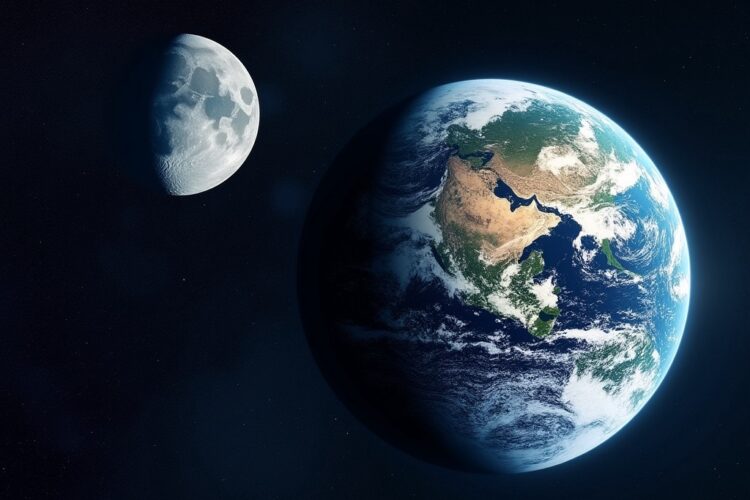The moon, Earth’s companion, is in a subtle celestial dance, gradually distancing itself at a rate of 1.5 inches per year—a phenomenon known as lunar recession. This gradual separation impacts Earth’s rotation, slowing it down and subtly lengthening our days. While the effects are minimal in the short term, this cosmic interplay serves as a reminder of the ever-changing dynamics within our solar system.
Long Version:
Lunar recession, an intricate cosmic ballet between Earth and its moon, unveils a fascinating interplay of gravitational forces and celestial mechanics. This phenomenon, marked by the moon’s gradual distancing from Earth at a rate of 1.5 inches per year, carries profound implications for our planet’s rotational dynamics and the broader understanding of our solar system’s evolution.
Understanding LR: The dance of LR is rooted in the gravitational interactions between Earth and the moon. As the moon exerts its gravitational influence on Earth, it transfers angular momentum, subtly propelling itself into a higher orbit. This transfer of momentum manifests as a gradual increase in the moon’s distance from Earth.
Impact on Earth’s Rotation: The repercussions of LR extend to Earth’s rotation. As the moon moves farther away, Earth’s rotation experiences a gradual slowdown. While imperceptible on human timescales, this phenomenon contributes to the lengthening of our days, emphasizing the interconnected nature of Earth and its celestial companion.
Historical Context and Observations: The understanding of LR has evolved through centuries of astronomical observation. Historical records, combined with modern instruments and space exploration, enable scientists to track the moon’s changing position with unprecedented precision. Ongoing observations contribute to refining our understanding of this celestial ballet.
Long-Term Implications: While the effects of lunar recession are subtle in the short term, they prompt contemplation of long-term consequences. Over geological timescales, the dynamics of Earth-moon interactions play a role in shaping the evolution of our solar system. Scientists explore these implications to unravel the broader narrative of celestial bodies within the cosmos.
Q&A
1. How does lunar recession influence Earth’s rotation and contribute to the lengthening of days over time?
– Answer: LR involves the moon moving away, slowing Earth’s rotation, and gradually lengthening our days.
2. What are the gravitational forces at play in the celestial dance between Earth and the moon during lunar recession?
– Answer: Gravitational forces drive lunar recession, with the moon transferring angular momentum to Earth.
3. In what ways does the understanding of lunar recession enhance our broader knowledge of the evolving dynamics within our solar system?
– Answer: Studying lunar recession deepens our understanding of Earth-moon dynamics, offering insights into the evolving relationships within our solar system.
4. What are the implications of longer days resulting from LR, and are they perceived as beneficial or detrimental?
– Answer: Longer days, stemming from LR, subtly impact Earth’s temporal rhythm, influencing various natural processes. Whether these changes are deemed beneficial or detrimental depends on perspectives in the context of ecological, climatic, and societal considerations.






